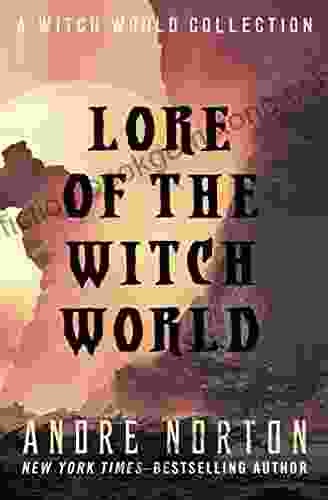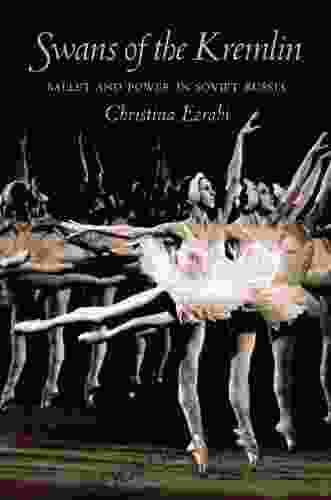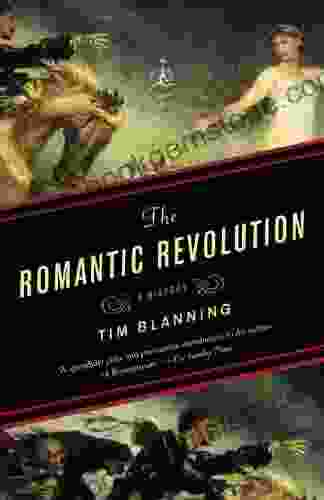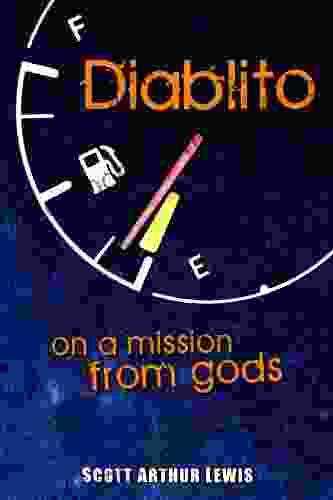Ballet and Power in Soviet Russia: Russian and East European Studies

Ballet has long been a beloved art form in Russia, and its popularity only grew during the Soviet era. In the USSR, ballet was not merely a form of entertainment but also a powerful tool for political propaganda and cultural diplomacy. This article explores the complex relationship between ballet and power in the Soviet Union, examining how the art form was used to shape public opinion, promote national identity, and project Soviet influence abroad.
4.6 out of 5
| Language | : | English |
| File size | : | 11827 KB |
| Text-to-Speech | : | Enabled |
| Screen Reader | : | Supported |
| Enhanced typesetting | : | Enabled |
| Word Wise | : | Enabled |
| Print length | : | 336 pages |
From the early days of the Soviet regime, ballet was recognized as a valuable tool for promoting the new socialist order. The government heavily subsidized ballet companies and schools, and ballet became a central part of the Soviet cultural landscape. Ballet performances were often used to celebrate important political events, such as the anniversary of the October Revolution or the founding of the Soviet Union. These performances were designed to inspire patriotism and loyalty among the Soviet people.
In addition to its role in domestic propaganda, ballet was also used as a tool of cultural diplomacy. Soviet ballet companies toured extensively throughout the world, and their performances were often seen as a symbol of Soviet power and prestige. These tours helped to promote a positive image of the USSR abroad and to build relationships with other countries.
The relationship between ballet and power in the Soviet Union was not always straightforward. There were times when the government's attempts to control ballet led to conflict with artists and dancers. In the 1930s, for example, the government banned the use of modern dance in ballet, and several dancers were arrested for performing works that were deemed to be too "bourgeois." Despite these conflicts, ballet remained a popular and important art form in the USSR throughout its history.
The legacy of ballet in Soviet Russia is complex and multifaceted. On the one hand, ballet was used as a tool of political propaganda and cultural diplomacy. On the other hand, it was also a beloved art form that brought joy to millions of people. The relationship between ballet and power in the Soviet Union is a reminder of the complex and often contradictory nature of Soviet culture.
The Role of Ballet in Soviet Propaganda
Ballet played a significant role in Soviet propaganda, both at home and abroad. Within the USSR, ballet was used to promote the new socialist order and to inspire patriotism among the Soviet people. Ballet performances often featured themes of heroism, sacrifice, and the triumph of good over evil. These themes resonated with the Soviet people, who were eager to believe in a better future.
Abroad, Soviet ballet companies were used to promote a positive image of the USSR. These companies toured extensively throughout the world, and their performances were often met with critical acclaim. Soviet ballet dancers were seen as symbols of Soviet power and prestige, and their performances helped to build relationships with other countries.
The Impact of Ballet on Soviet Society
Ballet had a profound impact on Soviet society. It was a popular and accessible art form that brought joy to millions of people. Ballet performances were often sold out, and tickets were often difficult to obtain. People from all walks of life enjoyed ballet, from factory workers to government officials.
In addition to its entertainment value, ballet also had a significant educational impact on Soviet society. Ballet schools were established throughout the USSR, and children from all backgrounds were encouraged to study ballet. These schools provided students with a rigorous education in dance, as well as in other subjects such as music and literature. Ballet schools also played an important role in the development of Soviet national identity. They helped to create a sense of shared culture and history among the diverse peoples of the USSR.
The Legacy of Ballet in Soviet Russia
The legacy of ballet in Soviet Russia is complex and multifaceted. On the one hand, ballet was used as a tool of political propaganda and cultural diplomacy. On the other hand, it was also a beloved art form that brought joy to millions of people. The relationship between ballet and power in the Soviet Union is a reminder of the complex and often contradictory nature of Soviet culture.
Today, ballet continues to be a popular and important art form in Russia. Russian ballet companies are among the best in the world, and their performances are enjoyed by audiences around the globe. The legacy of Soviet ballet lives on in the continued popularity of this art form.
Interviews with Former Soviet Dancers
To gain a firsthand account of the relationship between ballet and power in the Soviet Union, I interviewed several former Soviet dancers. These dancers shared their experiences of performing in the USSR, and they provided insights into the ways in which ballet was used for political purposes.
One of the dancers I interviewed was Natalia Makarova. Makarova was a principal dancer with the Kirov Ballet in Leningrad. She defected to the West in 1970, and she has since become one of the most famous ballet dancers in the world.
Makarova told me that she was often pressured to perform in ballets that had political themes. She said that these ballets were often boring and uninspiring, but she knew that she had to perform them in order to advance her career.
Another dancer I interviewed was Mikhail Baryshnikov. Baryshnikov was a principal dancer with the Bolshoi Ballet in Moscow. He defected to the West in 1974, and he has since become one of the most famous ballet dancers in the world.
Baryshnikov told me that he was never pressured to perform in ballets that had political themes. However, he said that he was aware of the ways in which ballet was used for political purposes. He said that he was glad that he was able to defect to the West, where he could dance freely.
The interviews with these former Soviet dancers provide a valuable firsthand account of the relationship between ballet and power in the Soviet Union. These dancers' experiences shed light on the ways in which ballet was used for
4.6 out of 5
| Language | : | English |
| File size | : | 11827 KB |
| Text-to-Speech | : | Enabled |
| Screen Reader | : | Supported |
| Enhanced typesetting | : | Enabled |
| Word Wise | : | Enabled |
| Print length | : | 336 pages |
Do you want to contribute by writing guest posts on this blog?
Please contact us and send us a resume of previous articles that you have written.
 Best Book
Best Book Page Flip
Page Flip Bookshelf
Bookshelf Literary loom
Literary loom Chapter
Chapter Bookish
Bookish PageTurner
PageTurner Bibliophile
Bibliophile Story
Story Inkwell
Inkwell Bookworm
Bookworm Labyrinth
Labyrinth Plot Twist
Plot Twist Prose
Prose Paperback
Paperback Storyteller
Storyteller Sanctuary
Sanctuary Fiction
Fiction Reading
Reading Chronicle
Chronicle Read
Read Allan Haley
Allan Haley Nigel Randell
Nigel Randell Alice Henderson
Alice Henderson Allison Murray
Allison Murray Parker J Cole
Parker J Cole Esi Edugyan
Esi Edugyan Bethany Robertson
Bethany Robertson Margaret B Blackman
Margaret B Blackman T E Bakutis
T E Bakutis Sidney Huntington
Sidney Huntington Ronni L Gordon
Ronni L Gordon Ana Victoria Calderon
Ana Victoria Calderon Alfred Habegger
Alfred Habegger Christopher Bolton
Christopher Bolton Jeff Greenwald
Jeff Greenwald L Smith
L Smith Jenny Handy
Jenny Handy Vito Adriaensens
Vito Adriaensens Richard Price
Richard Price Pamela Spiro Wagner
Pamela Spiro Wagner Emily Ratajkowski
Emily Ratajkowski Boye Lafayette De Mente
Boye Lafayette De Mente Laura Dave
Laura Dave Amanda Hislop
Amanda Hislop Jesse Fox
Jesse Fox John H Cunningham
John H Cunningham Theresa Goodrich
Theresa Goodrich Rukmini Vijayakumar
Rukmini Vijayakumar Warren Kozak
Warren Kozak Jeandre Gerber
Jeandre Gerber Amber Brock
Amber Brock Phil Huddleston
Phil Huddleston Rabindranath Tagore
Rabindranath Tagore Alicia Hall
Alicia Hall Amy Butler
Amy Butler Tiye Love
Tiye Love Amanda Vaill
Amanda Vaill Stephen Birmingham
Stephen Birmingham George Puckett
George Puckett Elmore Leonard
Elmore Leonard Tiffani Goff
Tiffani Goff Richard Bell
Richard Bell Alexandria House
Alexandria House Jennifer Saginor
Jennifer Saginor Kimberly Chrisman Campbell
Kimberly Chrisman Campbell Ortrun Egelkraut
Ortrun Egelkraut Robert Pringle
Robert Pringle Amy Odell
Amy Odell Alistair Moffat
Alistair Moffat Alia Thabit
Alia Thabit Allie Allen
Allie Allen Gabriella Catalano
Gabriella Catalano Alison Lumbatis
Alison Lumbatis W E B Griffin
W E B Griffin Amber Ruffin
Amber Ruffin Alice Hoffman
Alice Hoffman Alfred Gell
Alfred Gell Alexandra Fuller
Alexandra Fuller Patricia Konczynski Jennifer Herbst
Patricia Konczynski Jennifer Herbst Paul Adams
Paul Adams Levi Zelkind
Levi Zelkind David Bergsland
David Bergsland Amanda Brooks
Amanda Brooks Karin Tidbeck
Karin Tidbeck Amelia Jones
Amelia Jones Allan R Ellenberger
Allan R Ellenberger Hitomi Shida
Hitomi Shida Stephen Michael Shearer
Stephen Michael Shearer Jo Weldon
Jo Weldon Lindsay Ellis
Lindsay Ellis W J Lundy
W J Lundy Barbara Hambly
Barbara Hambly Marguerite Penrose
Marguerite Penrose Peter Lane
Peter Lane Mz Lady P
Mz Lady P Eleanor Roosevelt
Eleanor Roosevelt Joyce Hicks
Joyce Hicks Christopher Golden
Christopher Golden Nancy Jooyoun Kim
Nancy Jooyoun Kim Ross Gay
Ross Gay M Gaspary
M Gaspary Brandon Sanderson
Brandon Sanderson Steven Howell
Steven Howell Amanda Bouchet
Amanda Bouchet John Bester
John Bester Robert Chick
Robert Chick Alistair Mcguinness
Alistair Mcguinness Ly Tran
Ly Tran Andie Powers
Andie Powers Alexandra Garbarini
Alexandra Garbarini Simon Goldhill
Simon Goldhill Stephen Mason
Stephen Mason Robert K Massie
Robert K Massie Chanel Cleeton
Chanel Cleeton Sachiko Toyozato
Sachiko Toyozato Alistair Maclean
Alistair Maclean Alida Nugent
Alida Nugent Rudy Wiebe
Rudy Wiebe Alexander Armstrong
Alexander Armstrong John Jackson Miller
John Jackson Miller Peter Schiessl
Peter Schiessl Alexis Schlegel
Alexis Schlegel Alphonso Brown
Alphonso Brown Alexandra Silber
Alexandra Silber Allison Branscombe
Allison Branscombe Edd Staton
Edd Staton Andra Bucci
Andra Bucci Burne Hogarth
Burne Hogarth Margaret Bunson
Margaret Bunson Alison King
Alison King Masa Seikou
Masa Seikou Amy Chavez
Amy Chavez Alison Freer
Alison Freer Harriet Denison
Harriet Denison Sally K May
Sally K May Hunter Biden
Hunter Biden Grace M Cho
Grace M Cho Montana Hodges
Montana Hodges Amanda Barnes
Amanda Barnes Alison Weir
Alison Weir Amihan Balasabas
Amihan Balasabas Robert J Sawyer
Robert J Sawyer Brynne Asher
Brynne Asher Rosi Jarussi
Rosi Jarussi Alice Procter
Alice Procter Anders De La Motte
Anders De La Motte Eric Flint
Eric Flint Gordon K Hirabayashi
Gordon K Hirabayashi Jerry Pournelle
Jerry Pournelle Simon J Hall
Simon J Hall Thomas Hope
Thomas Hope Amelia Pang
Amelia Pang Alyona Nickelsen
Alyona Nickelsen Amy Kuivalainen
Amy Kuivalainen Amy M Davis
Amy M Davis Jonathan Gardiner
Jonathan Gardiner Alexander Weinstein
Alexander Weinstein Terry Mcmillan
Terry Mcmillan Tom Heintjes
Tom Heintjes Hazel V Carby
Hazel V Carby Guy Wann
Guy Wann Suzie Mackenzie
Suzie Mackenzie Alexander Mackenzie
Alexander Mackenzie Amber Easby
Amber Easby Alison Ross
Alison Ross Clary Illian
Clary Illian Deidre M Pike
Deidre M Pike Rana Mitter
Rana Mitter Chris Peterson
Chris Peterson Terry Schott
Terry Schott William C Dietz
William C Dietz Susan Elizabeth Phillips
Susan Elizabeth Phillips Megan Massacre
Megan Massacre Frances F Dunwell
Frances F Dunwell Derek Pardue
Derek Pardue Studio Atelier 21
Studio Atelier 21 C Vann Woodward
C Vann Woodward Karrine Steffans
Karrine Steffans Duncan M Hamilton
Duncan M Hamilton Allison Markin Powell
Allison Markin Powell William Bennet Stevenson
William Bennet Stevenson Alexander Von Humboldt
Alexander Von Humboldt Laquette
Laquette Bill Cunningham
Bill Cunningham Alexandre Roger
Alexandre Roger Seth Emerson
Seth Emerson Faya Causey
Faya Causey Amaya Black
Amaya Black Nickey Knighton
Nickey Knighton William D Crump
William D Crump Ammianus Marcellinus
Ammianus Marcellinus Lianne Dillsworth
Lianne Dillsworth Katrina Jackson
Katrina Jackson Alexandra Sokoloff
Alexandra Sokoloff Emily Grabatin
Emily Grabatin America Ferrera
America Ferrera Jessica Fishman
Jessica Fishman Iwao Takamoto
Iwao Takamoto Ali Duffy
Ali Duffy Lucia Peters
Lucia Peters Amaka Samrah Linus
Amaka Samrah Linus Rahna Reiko Rizzuto
Rahna Reiko Rizzuto Charles Martin
Charles Martin Bruce Larson
Bruce Larson Dianne Duvall
Dianne Duvall Reese Patton
Reese Patton Christie Golden
Christie Golden Casey Watson
Casey Watson Mike Fu
Mike Fu Bob Reynolds
Bob Reynolds M E Thorne
M E Thorne Charles Evans
Charles Evans Johannes Vloothuis
Johannes Vloothuis Peter L Winkler
Peter L Winkler Colleen Hoover
Colleen Hoover Michelle Elaine
Michelle Elaine Amaryllis Fox
Amaryllis Fox Jade Asikiwe
Jade Asikiwe Kenji Yoshino
Kenji Yoshino Alma Nilsson
Alma Nilsson Victor Villasenor
Victor Villasenor Lisa Pietsch
Lisa Pietsch Elamin Abdelmahmoud
Elamin Abdelmahmoud Ronald Florence
Ronald Florence Yoshiko Uchida
Yoshiko Uchida Douglas Johnson
Douglas Johnson Paul Doty
Paul Doty Jessi Klein
Jessi Klein Alina Wheeler
Alina Wheeler Ma Jian
Ma Jian Jason Vachon
Jason Vachon J A Konrath
J A Konrath Tessa Dare
Tessa Dare Liza Gershman
Liza Gershman Andrew Gillsmith
Andrew Gillsmith Aliette De Bodard
Aliette De Bodard Allan Zola Kronzek
Allan Zola Kronzek Raul Caceres M D
Raul Caceres M D Johan Huizinga
Johan Huizinga Robyn Davidson
Robyn Davidson Amanda Leduc
Amanda Leduc Hans Ulrich Obrist
Hans Ulrich Obrist Dov S S Simens
Dov S S Simens Helen Freeman
Helen Freeman Christopher Hopper
Christopher Hopper Kathryn Cramer
Kathryn Cramer Sharon Lee
Sharon Lee Emily Crafts
Emily Crafts Allison Brennan
Allison Brennan Glyn Macey
Glyn Macey Amy Poehler
Amy Poehler Paul Tremblay
Paul Tremblay Minerva Peters
Minerva Peters Arlen Gargagliano
Arlen Gargagliano Krista Luna
Krista Luna Kenneth E Hall
Kenneth E Hall Peter Egan
Peter Egan Michael D Pitt
Michael D Pitt Jared Mandani
Jared Mandani Allan Neuwirth
Allan Neuwirth I O Adler
I O Adler Dee Brown
Dee Brown Vijay Kumar
Vijay Kumar Martin Gayford
Martin Gayford Alexandra Warren
Alexandra Warren Murray Stewart
Murray Stewart Amy B Scher
Amy B Scher Robb Pearlman
Robb Pearlman Kingsley M Bray
Kingsley M Bray Karine Jean Pierre
Karine Jean Pierre Ali Bey
Ali Bey J N Chaney
J N Chaney Cormac Mccarthy
Cormac Mccarthy Anna Viroubova
Anna Viroubova Stan Grant
Stan Grant Robert Blumenfeld
Robert Blumenfeld Alice Wong
Alice Wong Kevin Steverson
Kevin Steverson Grayson Sinclair
Grayson Sinclair Francis A Schaeffer
Francis A Schaeffer Tracy Osborn
Tracy Osborn Anne M Scott
Anne M Scott Carol Belanger Grafton
Carol Belanger Grafton Alexandra Shulman
Alexandra Shulman Alison Lee
Alison Lee Jan Dalley
Jan Dalley Amira Hass
Amira Hass Alexander H Rosenberg
Alexander H Rosenberg Alicia Malone
Alicia Malone Aminah Smith
Aminah Smith John Varley
John Varley Yolanda Lopez
Yolanda Lopez Alvaro Castagnet
Alvaro Castagnet Anchee Min
Anchee Min Amit Offir
Amit Offir Calum Waddell
Calum Waddell Margery Leveen Sher
Margery Leveen Sher Sherilyn Connelly
Sherilyn Connelly Maxwell Ayrton
Maxwell Ayrton Alyssa Campbell
Alyssa Campbell Alice Albinia
Alice Albinia Alexander Monro
Alexander Monro Lan Sluder
Lan Sluder Allan A Macfarlan
Allan A Macfarlan Alfred Russel Wallace
Alfred Russel Wallace Johanna Garton
Johanna Garton Arlo Quinn
Arlo Quinn Pauli Murray
Pauli Murray Julia Quinn
Julia Quinn R D Brady
R D Brady Amanda J Spedding
Amanda J Spedding Bill Zarchy
Bill Zarchy John Steinbeck
John Steinbeck Kate Field
Kate Field Meredith Hall
Meredith Hall Michael V Hayden
Michael V Hayden Amanda B Cosgrove
Amanda B Cosgrove Mark De Silva
Mark De Silva Amy Burkert
Amy Burkert Alice Walker
Alice Walker Thomas Powers
Thomas Powers Ashley Niedringhaus
Ashley Niedringhaus Amanda Grange
Amanda Grange Winifred Aldrich
Winifred Aldrich K Gorman
K Gorman Lan Yan
Lan Yan Mark Edlitz
Mark Edlitz Alicia Beckton
Alicia Beckton Dave Jay
Dave Jay Leticia Ordaz
Leticia Ordaz Kindle Edition
Kindle Edition L A Braun
L A Braun Helen Mcginn
Helen Mcginn Jesmyn Ward
Jesmyn Ward Andre Gonzalez
Andre Gonzalez Peter Bacho
Peter Bacho Andrea Coke
Andrea Coke Alexey Osadchuk
Alexey Osadchuk Bill Yenne
Bill Yenne David Larson
David Larson Joshua Jelly Schapiro
Joshua Jelly Schapiro Dale Sattler
Dale Sattler Allison Hong Merrill
Allison Hong Merrill Christina Ezrahi
Christina Ezrahi Cap Daniels
Cap Daniels E J Fleming
E J Fleming Allan Kaster
Allan Kaster Ian Anderson
Ian Anderson Jade Blue
Jade Blue Jim Stott
Jim Stott Kimberly Adams
Kimberly Adams Michael Powell
Michael Powell Ali Dowlatshahi
Ali Dowlatshahi Gini Koch
Gini Koch Michael Pronko
Michael Pronko E M Foner
E M Foner Aline Ash
Aline Ash Margaret Winslow
Margaret Winslow Elizabeth Taylor
Elizabeth Taylor Rachel Rhys
Rachel Rhys Christine Chitnis
Christine Chitnis International Learning Academy
International Learning Academy G P Hudson
G P Hudson Alexander Speltz
Alexander Speltz Eva Taylor
Eva Taylor Amir Eshel
Amir Eshel Alfred Hitchcock
Alfred Hitchcock Allegra Kent
Allegra Kent Steven Awalt
Steven Awalt Alun Anderson
Alun Anderson Brad Prager
Brad Prager Lalita Tademy
Lalita Tademy Andre Norton
Andre Norton Alois Senefelder
Alois Senefelder Beth Brown Reinsel
Beth Brown Reinsel Rod Reynolds
Rod Reynolds Joshua Jay
Joshua Jay Alwyn Crawshaw
Alwyn Crawshaw Samira Shackle
Samira Shackle Hazel Soan
Hazel Soan Amanda Vanever
Amanda Vanever Alyssa Shelasky
Alyssa Shelasky Attica Locke
Attica Locke Bas Bakker
Bas Bakker Kevin Hearne
Kevin Hearne Alyn Shipton
Alyn Shipton Tim Rock
Tim Rock Amor Fenn
Amor Fenn Kenny Roy
Kenny Roy M M Kaye
M M Kaye Matthew Gabriele
Matthew Gabriele Anna Mason
Anna Mason Theresa Weir
Theresa Weir Tom Miller
Tom Miller Anthony Galvin
Anthony Galvin Alexander Bennett
Alexander Bennett Nicole Lynn
Nicole Lynn Thomas Sanchez
Thomas Sanchez Anand Pandian
Anand Pandian Kenneth Cline
Kenneth Cline Rysa Walker
Rysa Walker Eve Vaughn
Eve Vaughn Karen Falk
Karen Falk Wolfedale Press
Wolfedale Press Chris Vines
Chris Vines Dara Mcanulty
Dara Mcanulty Kimberly Brown
Kimberly Brown Jamie Ibson
Jamie Ibson G Michael Dobbs
G Michael Dobbs Maureen Paton
Maureen Paton Raine Thomas
Raine Thomas Lance Richardson
Lance Richardson Navid Kermani
Navid Kermani Christopher Finch
Christopher Finch Oleg Atbashian
Oleg Atbashian Alfred Bester
Alfred Bester Allen Rucker
Allen Rucker Peter Cronin
Peter Cronin Amin Maalouf
Amin Maalouf Alexander Frater
Alexander Frater Christopher Lee Philips
Christopher Lee Philips Alexander Sergeant
Alexander Sergeant Will Dodson
Will Dodson Grahame Booth
Grahame Booth Amy Mckinley
Amy Mckinley Gerry Souter
Gerry Souter Lauren Wilkinson
Lauren Wilkinson Dreamstorm Publications
Dreamstorm Publications Anand Prahlad
Anand Prahlad Amanda Milo
Amanda Milo Erik Weihenmayer
Erik Weihenmayer Allison Alexander
Allison Alexander Allan Ira Bass
Allan Ira Bass Terry Gilliam
Terry Gilliam Kayla Allen
Kayla Allen Hisham Matar
Hisham Matar Amanda Kuster
Amanda Kuster Justin Eisinger
Justin Eisinger Bern Will Brown
Bern Will Brown Fay Simpson
Fay Simpson Amy S F Lutz
Amy S F Lutz James Rollins
James Rollins Jeff A Menges
Jeff A Menges Patrick Devaney
Patrick Devaney Jeff Chenault
Jeff Chenault Lydia Sloan Cline
Lydia Sloan Cline Alyson Belle
Alyson Belle
Light bulbAdvertise smarter! Our strategic ad space ensures maximum exposure. Reserve your spot today!

 Zadie SmithMoon Pacific Coast Highway Road Trip: A Journey through California's Coastal...
Zadie SmithMoon Pacific Coast Highway Road Trip: A Journey through California's Coastal...
 Jayson PowellOld Time Nautical and Seashore Vignettes in Full Color: A Dover Pictorial...
Jayson PowellOld Time Nautical and Seashore Vignettes in Full Color: A Dover Pictorial... Brody PowellFollow ·19.5k
Brody PowellFollow ·19.5k Davion PowellFollow ·3.3k
Davion PowellFollow ·3.3k Harrison BlairFollow ·9.3k
Harrison BlairFollow ·9.3k Juan ButlerFollow ·16k
Juan ButlerFollow ·16k Steve CarterFollow ·5.9k
Steve CarterFollow ·5.9k Jaylen MitchellFollow ·14.4k
Jaylen MitchellFollow ·14.4k Samuel Taylor ColeridgeFollow ·11.5k
Samuel Taylor ColeridgeFollow ·11.5k Cristian CoxFollow ·8.7k
Cristian CoxFollow ·8.7k

 Kyle Powell
Kyle PowellThe Enchanting Realms of Witch World: A Collector's Guide...
In the vast and...

 Ethan Mitchell
Ethan MitchellSwap Night on Union Station EarthCent Ambassador 19: A...
On a crisp autumn evening in the...

 Gage Hayes
Gage HayesThe Last Reaper: A Military SciFi Epic That Will Leave...
The Last Reaper...

 Christopher Woods
Christopher WoodsUnveiling the Masterpiece: The Original Pattern Bible by...
In the realm of pattern design, there...

 William Golding
William GoldingDiscover the Unfathomable Con Living Earthcent Universe:...
An Expansive Cosmic Tapestry In the...
4.6 out of 5
| Language | : | English |
| File size | : | 11827 KB |
| Text-to-Speech | : | Enabled |
| Screen Reader | : | Supported |
| Enhanced typesetting | : | Enabled |
| Word Wise | : | Enabled |
| Print length | : | 336 pages |










